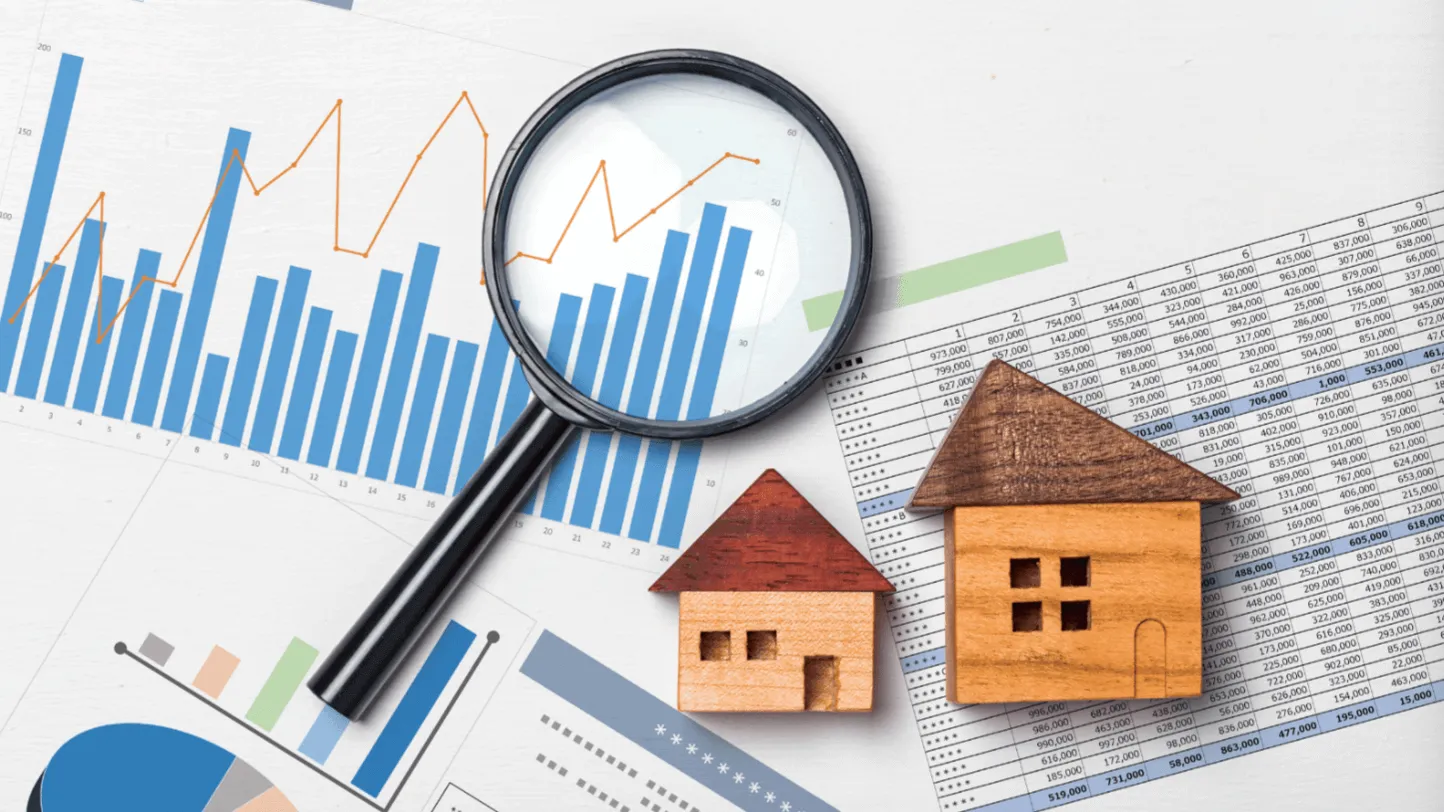Current Real Estate Market Trends
We explore how the real estate market has evolved and what the current trends in the digital real estate market are.
The real estate market plays a crucial role in both economic stability and the quality of life for individuals. From fluctuations in property prices to the evolution of buyer preferences, understanding the real estate market is essential not only for investors and industry agents but also for buyers and tenants seeking to make informed decisions about their homes or commercial properties.
Overview of the Real Estate Market
The real estate market encompasses a wide range of activities and segments, from buying and selling residential and commercial properties to leasing and investing in real estate. This market is characterized by its sensitivity to a series of economic, social, and political factors. Real estate market trends can vary significantly between different regions and property types, influenced by variables such as supply and demand, interest rates, and urban development policies.
In general, the real estate market tends to experience cycles of expansion and contraction, with periods of growth driven by high demand and limited supply, and phases of decline characterized by economic slowdown or excess supply. These cycles affect both property prices and market activity and can be subject to sudden changes due to external factors such as economic crises or legislative changes.

Importance of Understanding Current Real Estate Market Trends
Understanding current real estate market trends is essential for several reasons:
- Informed Decision Making: For investors, knowing trends allows for strategic decisions on where and when to invest. For example, identifying growth areas or understanding demand for certain types of properties can guide buying and selling decisions.
- Financial Planning: Buyers and tenants who are aware of trends can better plan their budget and anticipate price changes. This is crucial for avoiding financial surprises and taking advantage of market opportunities.
- Adaptation to Market Changes: Current trends can reveal changes in consumer preferences, such as increased demand for sustainable properties or smart home technologies. Being aware of these changes allows real estate agents and developers to adapt their offerings and strategies.
- Impact on Policies and Regulations: Changes in the real estate market can also influence government policies and regulations, from tax incentives to building standards. Understanding these trends helps anticipate and adapt to potential regulatory changes.
Factors Influencing Real Estate Market Trends
The real estate market is a complex ecosystem where various factors interact to influence property supply, demand, and prices. Understanding these factors is crucial for interpreting market trends and anticipating future movements. The main factors influencing the real estate market are the global and local economy, interest rates, and government policies and regulations.
Global and Local Economy
The economic health of a country or region has a significant impact on the real estate market. Here are some key aspects:
- Economic Growth: Robust economic growth tends to increase consumer confidence and purchasing power, which can increase demand for residential and commercial properties. Expanding economies generally experience increased construction and real estate development due to investment in new projects and infrastructure expansion.
- Unemployment and Income: Unemployment rates and income levels are crucial for the real estate market. Low unemployment and high incomes generally facilitate access to mortgage loans and, consequently, increase housing demand. Conversely, high unemployment can reduce potential buyers' ability to acquire properties, which can cool the market.
- Economic Cycles: Economic expansion and recession cycles affect consumer confidence and real estate market stability. During a recession, real estate market activity may decrease, with lower prices and reduced demand. In contrast, during an economic expansion phase, one generally observes an increase in prices and greater market activity.
Interest Rates
Interest rates play a fundamental role in real estate market dynamics with examples such as:
- Financing Cost: Interest rates directly influence the cost of mortgage loans. When interest rates are low, the cost of financing a property decreases, which can stimulate home purchases and real estate investment. Low rates generally result in higher sales volumes and possible property price appreciation.
- Monetary Policy: Central bank decisions regarding interest rates can have widespread effects on the real estate market. An expansionary monetary policy (low interest rates) can stimulate the market, while a restrictive policy (high interest rates) can cool it. Expectations of rate changes can also affect market activity, with buyers and sellers adjusting their strategies based on future projections.
- Credit Accessibility: Interest rates also affect credit accessibility. Low rates facilitate obtaining mortgages, allowing more people to access property ownership. On the other hand, higher rates can make loans less attractive, reducing demand and affecting the real estate market.
Government Policies and Regulations
Government policies and regulations have a crucial impact on the real estate market. Key aspects include:
- Fiscal Policies and Incentives: Fiscal incentives, such as mortgage deductions or tax credits for home purchases, can stimulate demand in the real estate market. Governments can implement policies to encourage home buying or support the construction of new properties through subsidies and tax benefits.
- Zoning and Construction Regulations: Local regulations related to zoning and construction influence real estate development. Land use restrictions and building requirements can limit the supply of new properties and affect prices. For example, strict regulations can reduce development density in urban areas, which can increase demand and prices in these areas.
- Affordable Housing Policies: Government programs aimed at promoting affordable housing can influence supply and demand in specific segments of the real estate market. These programs can include subsidies for low-cost housing construction or incentives for developers who build accessible properties.
- Regulatory Changes: Reforms in property laws, real estate taxes, and rental regulations can also affect the market. Legislative changes can influence the profitability of real estate investments and buying and selling decisions.

3 Real Estate Market Trends
The real estate market is constantly evolving, influenced by a series of current trends that reflect changes in the economy, technology, and social preferences. In this section, we'll explore the main trends shaping the real estate market today, focusing on growth and decline in regional markets, demand for specific types of properties, and the impact of technology on real estate investment.
1. Growth and Decline in Regional Markets
The real estate market is not uniform; it presents significant variations depending on geographic location. At the regional level, clear patterns of growth and decline can be observed:
Metropolitan Areas vs. Rural Areas:-Metropolitan Areas: Large cities and metropolitan areas are often epicenters of growth due to their high population density, employment, and services. These areas often attract buyers and investors looking for job opportunities and access to quality infrastructure. However, property prices in big cities are generally higher, which can lead to increased demand for properties in nearby suburbs.
- Rural Areas: On the other hand, rural and suburban areas are experiencing a resurgence due to the increase in remote work and the search for larger and more affordable spaces.
Contributing Factors: Growth in metropolitan areas is often due to economic expansion and investment in infrastructure. In contrast, interest in rural areas may be driven by the search for quality of life, lower population density, and more affordable prices. Additionally, transport infrastructure and digital connectivity play a key role in attracting residents to these areas.

2. Demand for Specific Types of Properties
The demand for different types of properties is also changing, reflecting new priorities and lifestyles of buyers:
Single-Family Homes vs. Apartments:-Single-Family Homes: The demand for single-family homes has increased, driven by the desire for more personal space and privacy. Families and individuals working from home are looking for properties with additional spaces, such as home offices and yards. This trend has led to an increase in the construction and sale of single-family homes in suburbs and less densely populated areas.
- Apartments: Although demand for apartments in urban areas may have decreased in some regions, it remains strong in others. Apartments offer advantages such as proximity to work and urban services, as well as lower maintenance responsibilities. Rental properties in urban areas also continue to be popular among young professionals and students.
Commercial and Residential Properties:-Commercial Properties: The commercial property market has faced challenges following the pandemic, with an increase in remote work and growth in e-commerce affecting demand for offices and commercial spaces. However, certain segments, such as warehouses and distribution centers, have seen growth due to the increase in online commerce.
- Residential Properties: Demand for residential properties remains high, especially in segments that offer features such as outdoor spaces and eco-friendly characteristics. The search for homes that promote well-being and sustainability is on the rise.
3. Impact of Technology on Real Estate Investment
Technology is revolutionizing the real estate market, transforming how buyers, sellers, and investors interact with the market:
Proptech and Its Influence:-Proptech Innovations: The term "Proptech" refers to the application of technology in the real estate sector. From data analysis platforms to property management solutions, Proptech is facilitating more informed decision-making and efficiency in property management. Tools such as artificial intelligence and big data analysis are allowing investors to assess opportunities and risks more accurately.
- Automation and Efficiency: Automation in property management, including rental and maintenance management, is improving operational efficiency. Emerging technologies are also influencing the development of smarter and more sustainable properties.
Online Buying and Rental Platforms:-Ease of Access: Online platforms have transformed the process of buying and renting properties, providing users with access to a wide range of options and facilitating price and feature comparisons. These platforms allow buyers and tenants to explore properties virtually, conduct online visits, and manage procedures more efficiently. Strategies like Virtual Home Staging allow for a constantly changing market with continuous innovations, making it easier for clients to buy or rent.
- Market Impact: The proliferation of these platforms has increased transparency and competition in the real estate market, benefiting consumers with better options and more competitive prices. Additionally, they have reduced geographical barriers, allowing international buyers to explore and acquire properties in different countries.
Changes in Buyer Preferences
Property buyers' preferences are changing significantly, driven by factors such as remote work, sustainability, and technological advances. These transformations are shaping the real estate market and redefining the characteristics that buyers value in their future homes. Here's a detailed examination of these changes:
Sustainability and Green Construction
Concernfor the environment and sustainability has influenced buyers' preferences, who are increasingly seeking properties that are environmentally friendly and reduce their carbon footprint:
- Green Construction: Buyers are interested in homes built with sustainable materials and construction techniques that minimize environmental impact. This includes the use of recycled materials, efficient insulation systems, and construction techniques that reduce energy consumption.
- Environmental Certifications: Certifications such as LEED (Leadership in Energy and Environmental Design) are gaining relevance among environmentally conscious buyers. These certifications ensure that a property meets specific sustainability and energy efficiency standards.
- Renewable Energy: The installation of renewable energy systems, such as solar panels and geothermal heating and cooling systems, is on the rise. Buyers value properties that offer sustainable energy sources, as they not only reduce environmental impact but also decrease long-term energy costs.
- Ecological Design: In addition to energy systems, home design is also changing to incorporate ecological features, such as vertical gardens, green roofs, and rainwater collection systems. These elements not only contribute to sustainability but also improve air quality and residents' well-being.

Home Technology and Smart Homes
The integration of technology in the home is transforming how buyers interact with their homes. Smart homes, equipped with advanced technology, are increasingly in demand:
- Home Automation: Home automation allows residents to control various aspects of their home through smart devices and mobile applications. This includes lighting systems, temperature control, security, and appliances, all manageable from a smartphone or tablet.
- Smart Security: Smart security systems, including surveillance cameras, motion sensors, and electronic locks, are on the rise. These systems provide greater peace of mind to homeowners by allowing them to monitor and control their home's security remotely.
- Energy Efficiency: Technology also plays a key role in improving the energy efficiency of homes. Smart thermostats, controllable LED lights, and energy management systems help reduce consumption and associated energy costs, responding to the preferences of buyers interested in sustainability and expense reduction.
- Interaction and Comfort: Virtual assistants and integrated entertainment systems are improving comfort and the home experience. The ability to control devices by voice command, manage multimedia entertainment, and adapt the home environment to personal preferences is raising buyers' expectations.
Future Perspectives of the Real Estate Market
The real estate market is constantly evolving, influenced by a combination of economic, social, and technological factors. Analyzing future market perspectives is crucial to understand how these elements can shape property supply, demand, and prices. We will explore short and long-term predictions, as well as new opportunities and risks that could affect the real estate market in the future.
Short and Long-Term Real Estate Market Predictions
Short-Term:
-
Inflation and Interest Rates: Interest rates and inflation will be key factors in the short term. If central banks raise rates to control inflation, financing costs could increase, which could cool the market. In contrast, lower interest rates can stimulate home buying and real estate investment. Inflation will also affect construction costs and property prices.
-
Demand Adaptation: Buyer preferences will continue to adjust in response to current conditions. Interest in multifunctional spaces , sustainable housing, and smart technologies will likely remain strong. Suburban and rural areas could remain attractive for those seeking more space and tranquility. Long-Term:
-
Urbanization and Demographics: In the long term, urbanization will remain a dominant trend, with continued growth of urban populations. This will drive demand for residential and commercial properties in cities. However, there could also be an increase in demand for sustainable urban developments that incorporate green spaces and efficient transportation solutions.
-
Technology and Proptech: Technology will continue to transform the real estate market. Advances in Proptech, including artificial intelligence, blockchain, and innovative construction technologies, will have a profound impact on how properties are bought, sold, and managed. These technologies could improve market efficiency and offer new forms of investment.
-
Sustainability and Environmental Regulations: Pressure to adopt sustainable and environmentally friendly practices will continue to grow. Stricter environmental regulations will push developers to incorporate eco-friendly solutions into their projects. Properties meeting these standards could experience increased demand and long-term appreciation.
-
Climate Change and Resilience: Climate change will affect the real estate market in the long term, especially in areas vulnerable to extreme weather events. Buyers and investors might prioritize properties located in areas less exposed to climate risks or with features designed to improve resilience to natural disasters.
New Opportunities and Risks in the Real Estate Market
New Emerging Opportunities:
-
Development of Sustainable Properties: The growing demand for eco-friendly and sustainable properties presents opportunities for developers and builders. Projects incorporating green building practices, energy efficiency, and clean technologies will be well-positioned to attract an expanding market that values sustainability.
-
Digitalization and Technology: The adoption of digital technologies is transforming how properties are bought and sold. Tools like virtual home staging allow buyers to visualize how a property might look without needing to visit it physically.
-
Flexible Spaces and Co-Living: The demand for flexible spaces and co-living models is on the rise. Developers who adapt to these trends, offering spaces that can be customized for different uses or promoting shared living models, could capture a significant portion of the emerging market. Risks:
-
Economic Volatility: Economic and political fluctuations can affect the real estate market unpredictably. Economic crises, changes in fiscal or trade policies, and geopolitical events can influence market stability and investor confidence.
-
Increased Costs and Material Availability: Inflation and supply chain issues can increase construction costs and limit material availability. These factors could affect the viability of new projects and developers' ability to maintain competitive prices.
-
Climate and Environmental Risks: Extreme weather events and climate change represent growing risks for the real estate market. Properties located in areas prone to natural disasters could face significant challenges, affecting their value and investment profitability.
-
Regulatory Changes: New environmental, fiscal, or zoning regulations can impose challenges on developers and property owners. It is essential to stay informed about potential reforms and adapt to new standards to mitigate these risks.
Impact of Demographics on Real Estate Market Trends
Aging Population
The aging population is a significant demographic trend that is transforming the real estate market. As baby boomer generations retire and live longer, their housing needs and preferences are changing:
- Demand for Adapted Housing: Older adults are seeking housing that adapts to their mobility and accessibility needs. This includes properties with features such as ramps, elevators, and adapted bathrooms and kitchens. Single-story homes or condominiums with services suitable for older people are in high demand.
- Senior Living Communities: Retirement communities and assisted living complexes are seeing an increase in demand. These developments offer services and amenities designed for older adults, such as healthcare, recreational activities, and daily support, creating living environments that promote well-being and independence.
- Relocation and Housing Adjustment: As older adults seek to reduce maintenance and costs associated with large properties, there is growing interest in relocating to smaller homes or communities that offer a more manageable lifestyle. This shift can affect demand in the large single-family home market and increase interest in apartments.
Preferences of New Generations
New generations, including millennials and Generation Z, are influencing the real estate market with their unique preferences and expectations:
- Housing Preferences: Millennials and Generation Z tend to value location, accessibility to services, and sustainability more than previous generations. They prefer housing in urban or suburban areas close to their workplaces, entertainment options, and public transportation.
- Technology and Connectivity: The integration of technology in the home is essential for new generations. They seek homes equipped with modern technology, such as home automation systems, high-speed Wi-Fi, and smart security systems. Developers are responding to this demand by incorporating advanced technological solutions into new projects.
- Sustainability and Energy Efficiency: Environmental concern is a priority for these generations. They prefer properties that are energy efficient and use sustainable materials. The demand for homes with eco-certifications and features such as solar panels and water recycling systems is on the rise.
- Flexible Lifestyles: Young professionals and students seek housing that offers flexibility in space use, such as areas that can be converted into home offices or study zones. They also value proximity to co-working spaces and social areas, reflecting a dynamic and adaptable lifestyle.
Advice for Investors and Buyers
Strategies to Adapt to Trends
- Stay Informed: It is crucial for investors and buyers to be aware of market trends and emerging preferences. Subscribing to market reports, following real estate industry news, and attending seminars or conferences can provide valuable information for making informed decisions.
- Evaluate Regional Demand: Before investing, researching local trends can help identify areas with high demand. Considering factors such as population growth, infrastructure development, and resident preferences can guide decisions on where to invest.
- Invest in Sustainability: Given the growing interest in sustainable properties, considering investments in developments that incorporate eco-friendly practices and efficient technologies can offer competitive advantages. Properties that meet sustainability standards often have higher demand and may experience long-term value appreciation.
- Adapt the Portfolio: For investors, adjusting the portfolio to include a mix of properties that respond to current trends is essential. This may include investments in multifunctional housing, properties in emerging areas, and projects with advanced technological features.
- Go Digital: Use digital tools to improve your properties. At Pedra, we have tools such as Virtual Home Staging , AI renders or real estate photo enhancements.
How to Evaluate Opportunities in a Changing Market
- Data and Trend Analysis: Using data analysis tools to evaluate historical market performance, vacancy rates, and price trends can provide a clear vision of opportunities and risks. Recent data and market projections are key to making informed investment decisions.
- Consider the Impact of Government Policies: Local and national policies can influence the real estate market. Evaluating development policies, tax incentives, and environmental regulations can help anticipate how these factors may affect an investment's profitability.
- Evaluate Value Potential: When analyzing properties, considering long-term appreciation potential is crucial. Factors such as location, development of nearby infrastructure, and property characteristics can influence its future appreciation.
- Risk Diversification: Diversifying investments across different types of properties and regions can help mitigate risks. Investing in a variety of real estate assets, such as residential, commercial, and land, allows investors to balance risk and take advantage of different market opportunities.
- Consult with Professionals: Working with real estate agents, financial advisors, and industry experts can provide valuable perspectives and specialized advice. These professionals can help identify opportunities, evaluate properties, and develop effective strategies for success in a changing market.
In the real estate market, it's not just about following trends or buying/selling a good property, but also about how to describe and reach the buyer or seller. That's why we've created a tool to generate free real estate listings via Pedra.

Related Posts
Top 7 AI Room Decoration Tools for 2025
Discover the best AI room decoration software for 2025. Our review compares top tools to help you de...
9 Curb Appeal Ideas on a Budget That Actually Work (2025)
Transform your home's exterior with our top curb appeal ideas on a budget. Get easy, high-impact tip...
10 Essential Curb Appeal Improvements for 2025
Discover 10 essential curb appeal improvements to boost property value. This guide for real estate p...